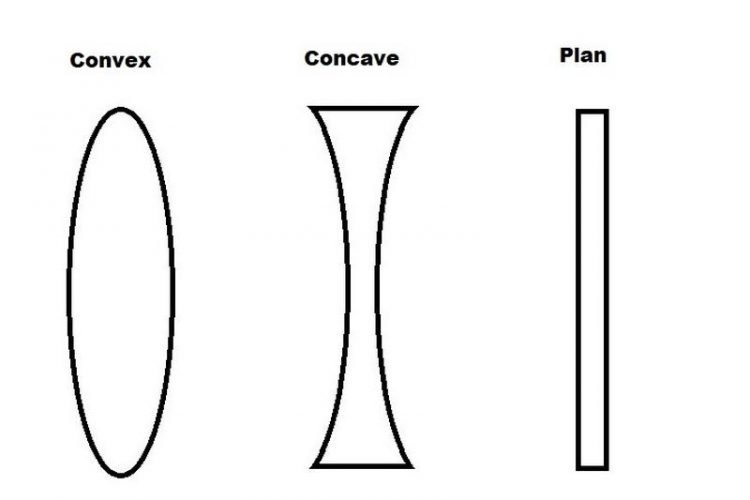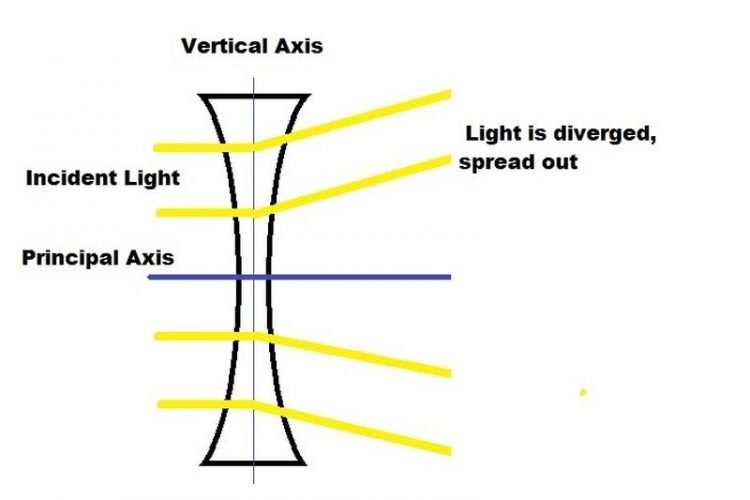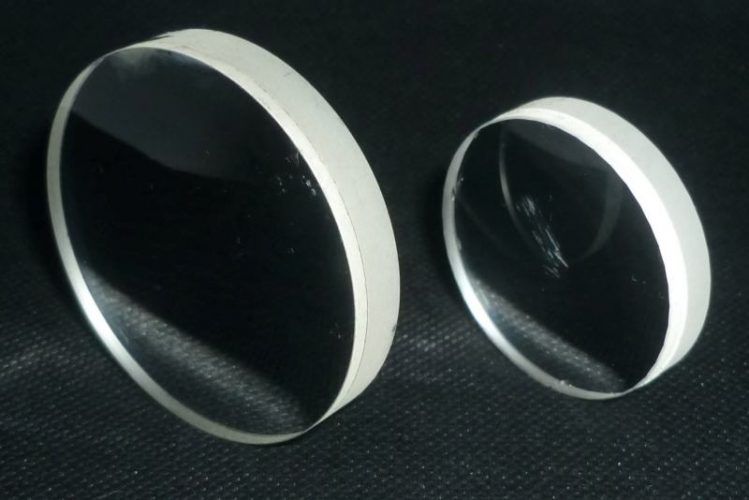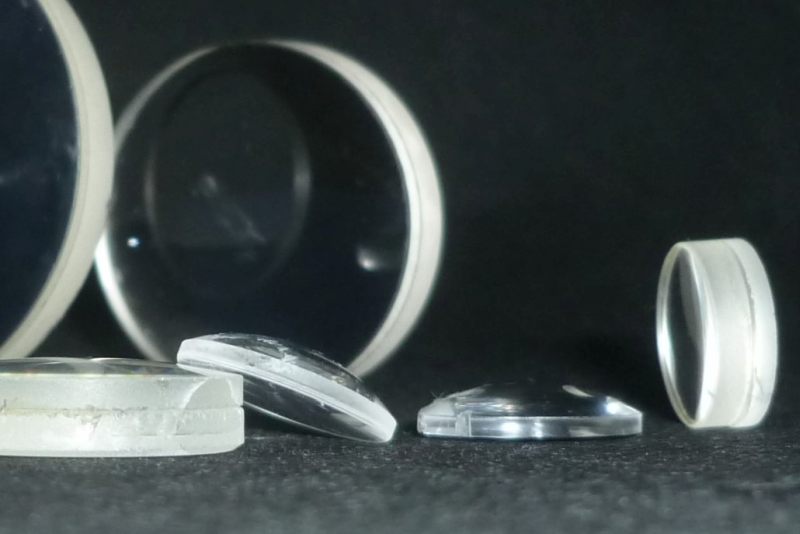Optical instruments, be it binoculars, telescopes, or microscopes, work through a collection of optical lenses and clever use of the various optical properties of the different lens shapes and the different material properties of optical glass types and their surface coatings.
But how does a lens work?
An optical lens is a more or less curved glass body that deflects light in its path. This deflection is also referred to as refraction. The curvature of a lens can have three shapes by which lenses are classified.
- Convex – a converging lens, bulging outwards in middle (principal axis)
- Concave – a diverging lens, depressed in its principle axis
- Planar – flat without curvature

Convex lens
A convex lens collects incident light and focuses it on a point that ideally lies exactly on the optical axis. Anyone who has ever held a magnifying glass in sunlight and seen the light on the other side focused on one point knows this effect.

Concave Lens
A concave lens directs the incident light away from the optical axis, it disperses the light.

Spherical and chromatic aberration in Optical Lenses
Unfortunately, there is no such thing as an ideal lens. Image errors are unavoidable, depending on the quality of the lens. When objects are viewed through lenses, the images may show blurring, color fringing, or other optical errors.
Spherical Aberration

The spherical aberration occurs when light travels through a curved lens.
Light rays that are further away from the optical axis (principal axis) are refracted more strongly than rays that are close to the axis.
This means that incident collimated light rays do not merge in one focal point on the optical axis after passing through the lens.
The image of an object viewed through a lens or a system of lenses appears partially blurry, the effect increases at the edge area. Edge blur is an important quality feature when evaluating binoculars. 
Chromatic Aberration
 Chromatic aberration occurs when light consisting of a combination of different wavelengths travels through a lens.
Chromatic aberration occurs when light consisting of a combination of different wavelengths travels through a lens.
The refraction depends on the wavelength. Blue light is refracted more strongly by a lens than red light; the focal point of a lens shifts depending on the wavelength. As a result, not all the different wavelengths merge in a single point.
This effect leads to color fringes in the observed object, especially in the case of extremely hard contrasts of a light-dark pattern. It leads to color fringing at the edges, but also to a reduction in contrast in the image due to the blurred image.
This phenomenon is known from prisms where the effect is used to split white light into its colored components.
Lenses In Binoculars
These aberrations are of course undesirable in binoculars. To suppress or reduce optical errors, extensive experience in the production of high-quality optical glass, knowledge of different types of glass, and their different properties as well as the behavior of light when passing through the glass are essential. These efforts to eliminate aberration as much as possible distinguish cheap binoculars from premium ones.
In order to keep these aberrations in binoculars as low as possible, differently shaped lenses are combined as well as different types of flint and crown glass with specific optical properties are used.
If you are curious and disassemble binoculars to take a closer look at the binoculars parts and the lenses, you will notice that the lenses are not just simple convex lenses, but are compound lenses made of two or three glass bodies.

The objective lens of binoculars, also known as a collecting lens utilizes the so-called Achromatic double lens or Apochromatic lens.
Achromatic double lens
To reduce the aberration of the chromatic aberration in binoculars lens systems, so-called achromatic double lenses are used. In an achromatic lens, two lenses of different material and thus different refraction properties are paired to form a compound lens, so that their respective chromatic aberration errors cancel each other out. The double lens consists of a converging lens made of crown glass and a diverging lens made of flint glass.
How Optical Lenses Work
Recap
Optical lenses are defined as transparent panes of which at least one of the two surfaces is curved – usually spherical or spherical. Light passing through is refracted at the surfaces and deflected towards the center of the light beam (converging lens) or scattered outwards (diffusing lens). A convex surface collects the light, a concave surface diffuses it.
There are countless lens shapes and types that refract light in a wide variety of ways. Individual lenses are combined with one another to correct image errors. Two or more lenses are cemented together so that lens groups that are to be treated like individual lenses are created.
Quite as important as the type of glass used and the design of the lenses are the coatings of the lenses and prisms in modern binoculars. These contribute to a large extent to the correction of imaging errors and also ensure an increase in transmission.
This knowledge and experience of how to make good optical glass and the best optical lenses are one of the main factors that determine the price of good binoculars.



